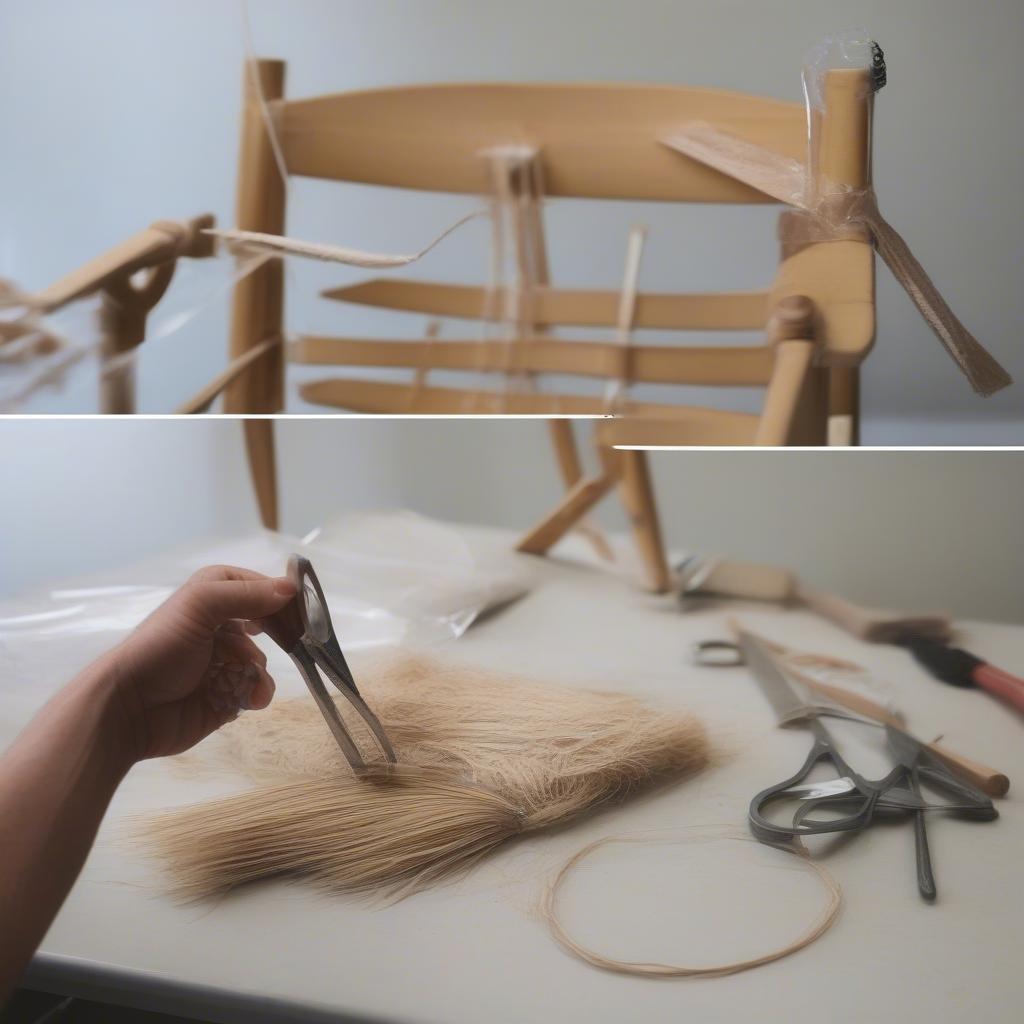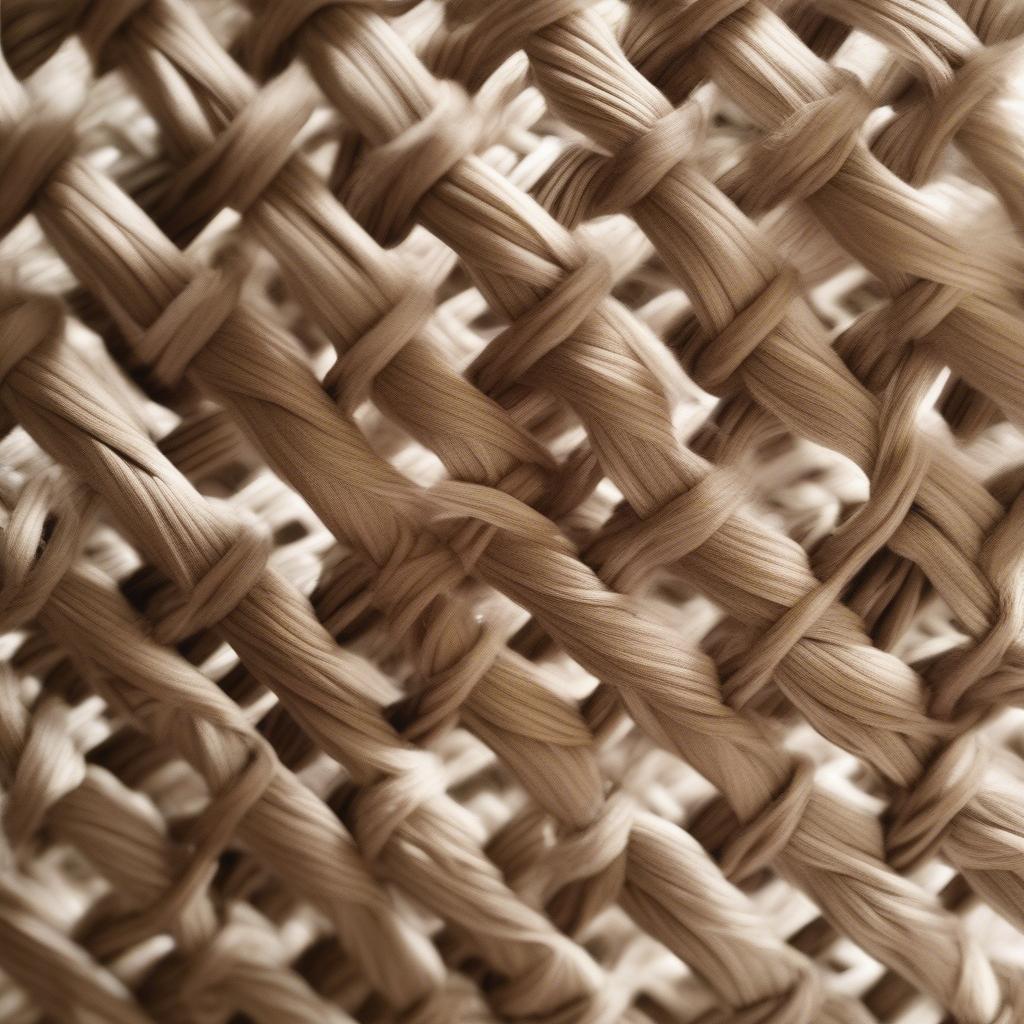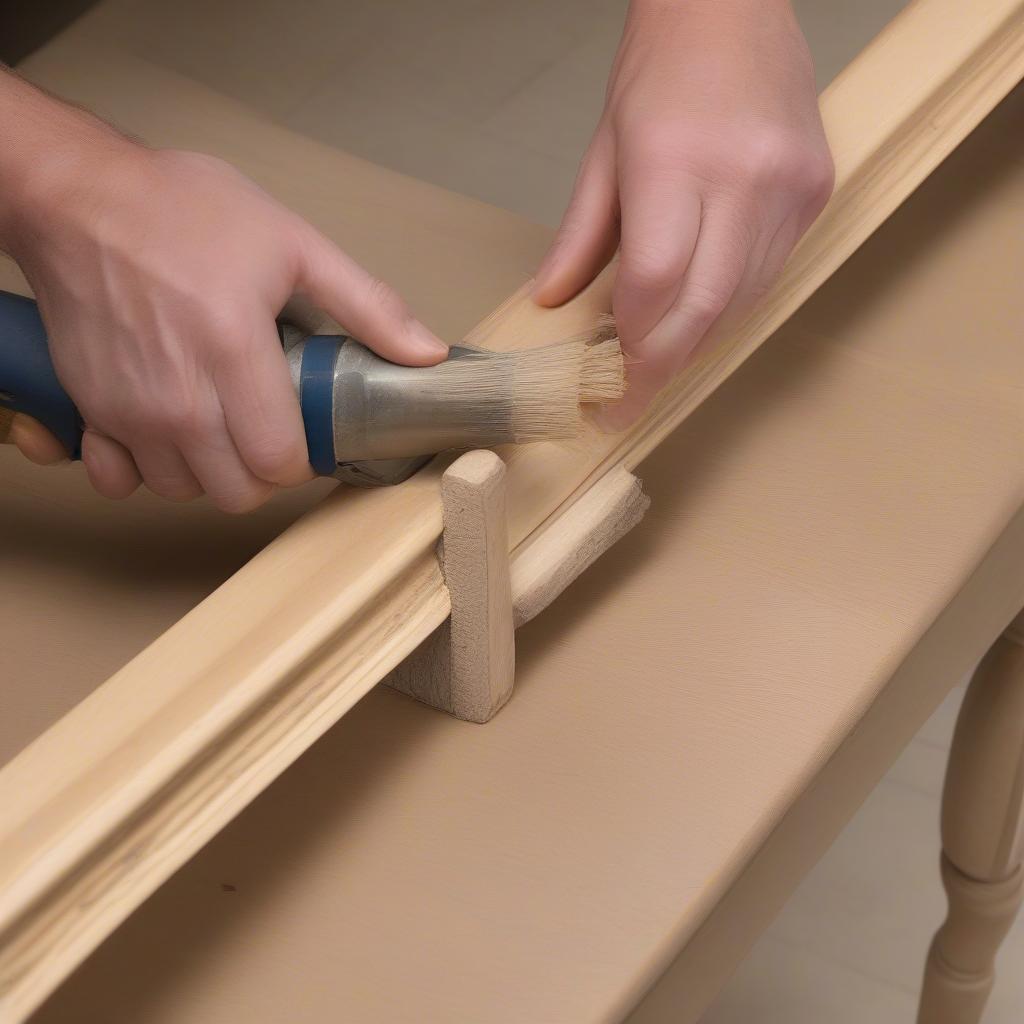Weave Chair
Rush Chair Weaving Instructions: A Comprehensive Guide
Learning rush chair weaving opens up a world of possibilities, from restoring cherished family heirlooms to creating unique, handcrafted pieces. This guide provides comprehensive Rush Chair Weaving Instructions, equipping you with the knowledge and techniques needed to weave beautiful and durable chair seats. Whether you’re a beginner or an experienced crafter, you’ll find valuable insights and practical tips to help you master this traditional craft.
Getting Started with Rush Chair Weaving
Before diving into the weaving process, gather your materials. You’ll need rush, a sturdy chair frame, scissors, a bucket of water, and a blunt tool for tucking the rush. Pre-soaked rush is easier to work with, so submerge it in water for at least 30 minutes before starting.  Rush Chair Weaving Materials This preparation ensures the rush remains pliable and less likely to break during the weaving process.
Rush Chair Weaving Materials This preparation ensures the rush remains pliable and less likely to break during the weaving process.
Choosing the Right Rush
The type of rush you choose impacts the final look and durability of your chair seat. Common options include pre-twisted paper rush, natural rush, and seagrass. chair seat weaving kits often provide all the materials you need for a specific project. Each material offers unique characteristics; for example, paper rush is ideal for beginners due to its uniformity and ease of use.
Basic Rush Chair Weaving Techniques
Begin by attaching the rush to the front rail of the chair frame. Create a knot and securely fasten it underneath the rail. Then, begin weaving the rush across the seat frame, following a specific pattern. The most common pattern is the four-corner weave, which creates a classic, sturdy seat.  Four Corner Rush Weave Pattern Ensure the rush is taut but not too tight to avoid damaging the frame.
Four Corner Rush Weave Pattern Ensure the rush is taut but not too tight to avoid damaging the frame.
Mastering the Four-Corner Weave
The four-corner weave involves passing the rush over and under each rail, creating a diagonal pattern. As you weave, keep the rush moist by dipping it in water periodically. This prevents it from drying out and becoming brittle. chair weaving patterns free can be found online and are a great resource for beginners. They provide visual aids and step-by-step instructions to help you master different weaving techniques.
Tips for a Professional Finish
As you approach the end of the weaving process, neatly tuck the ends of the rush under the rails using your blunt tool. This creates a clean, finished look and secures the weave. Trim any excess rush, ensuring a smooth and even surface.  Finishing the Rush Chair Weave This finishing touch elevates the overall appearance of your handcrafted chair seat.
Finishing the Rush Chair Weave This finishing touch elevates the overall appearance of your handcrafted chair seat.
“Attention to detail is paramount in rush chair weaving,” says renowned artisan Emily Carter. “A well-executed tuck can make all the difference in the final product’s quality and longevity.”
Troubleshooting Common Issues
While rush chair weaving is relatively straightforward, some challenges can arise. If the rush breaks, simply tie a new piece to the broken end and continue weaving. how to weave a chair danish cord offers insights into other weaving materials and techniques, expanding your skillset. Learning to address these minor setbacks allows for a seamless and enjoyable weaving experience.
Maintaining Your Woven Chair Seat
To maintain the beauty and durability of your woven chair seat, avoid excessive moisture and direct sunlight. Clean the seat regularly with a damp cloth. “Proper care ensures your woven chair remains a beautiful and functional piece for years to come,” advises restoration expert, John Miller.
Conclusion
Mastering rush chair weaving instructions allows you to create stunning, handcrafted pieces. By following the steps outlined in this guide and practicing diligently, you’ll be well on your way to creating beautiful and long-lasting chair seats. Remember to explore various materials and patterns to develop your unique style. Rush chair weaving not only allows you to restore and create beautiful furniture but also connects you with a rich tradition of craftsmanship. weaved chair bottom showcases a variety of woven chair bottoms for inspiration.
FAQ
- What type of rush is best for beginners?
- How long does it take to weave a chair seat?
- Where can I find rush chair weaving supplies?
- Can I weave a chair seat with other materials besides rush?
- How do I repair a broken rush strand while weaving?
- What are some common rush chair weaving patterns?
- How do I care for my woven chair seat?
Scenarios
- Scenario 1: A beginner wants to learn rush chair weaving. This article provides a comprehensive guide, covering everything from materials to techniques, and is perfect for beginners looking to start this craft.
- Scenario 2: Someone is restoring an old chair and needs to replace the woven seat. This guide offers step-by-step instructions on how to weave a new seat using rush, revitalizing their cherished furniture.
- Scenario 3: An experienced crafter is looking for new rush weaving patterns. The article mentions resources for free patterns and different weaving techniques, like the Danish cord, expanding their skillset.
Related Resources
- Explore various chair weaving patterns. weave a chair bottom site pinterest.com can be a good starting point.
For any assistance, please contact us at Hanoi, Vietnam or Tech Avenue, Suite 12, San Francisco, CA 94105, USA. We have a 24/7 customer support team.
